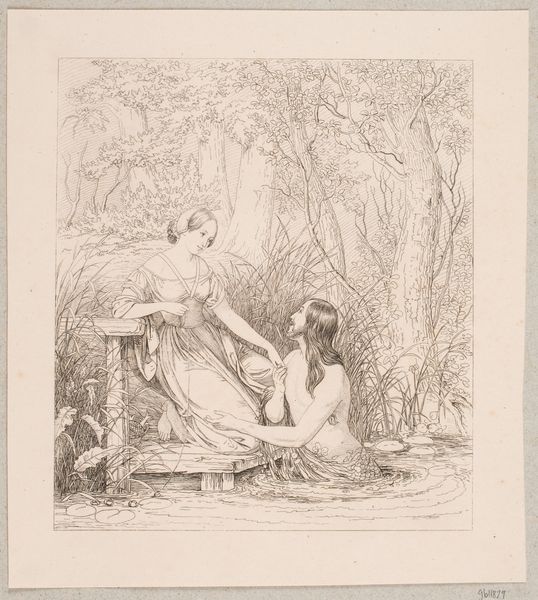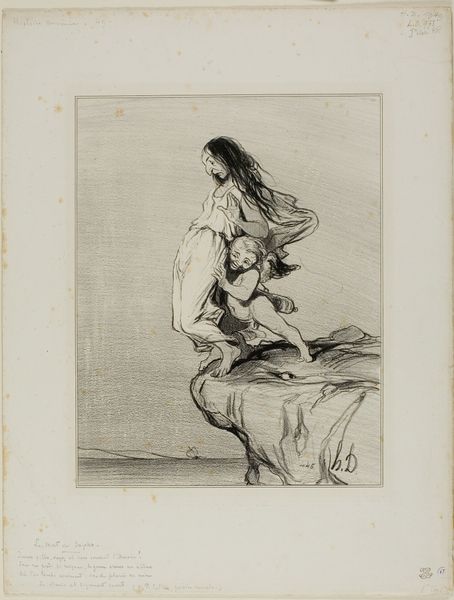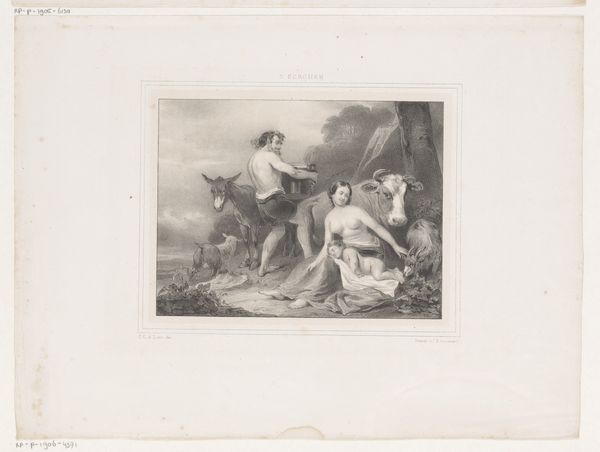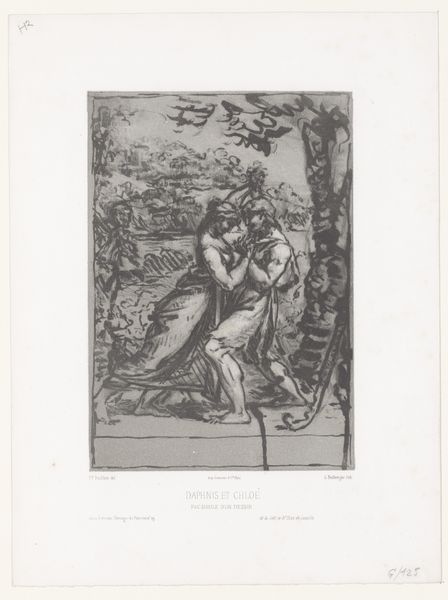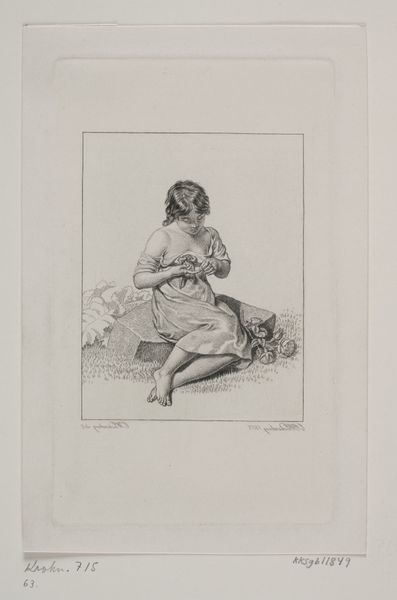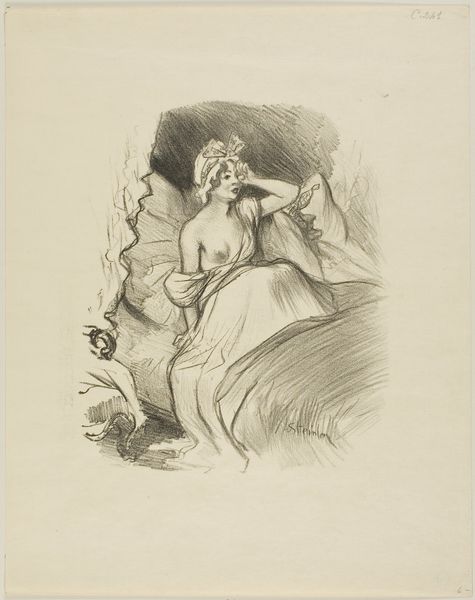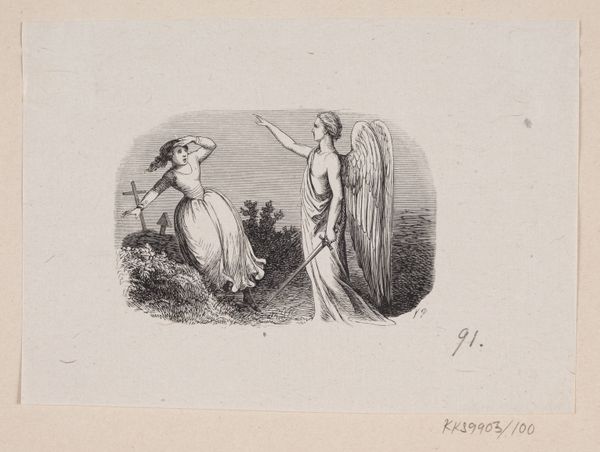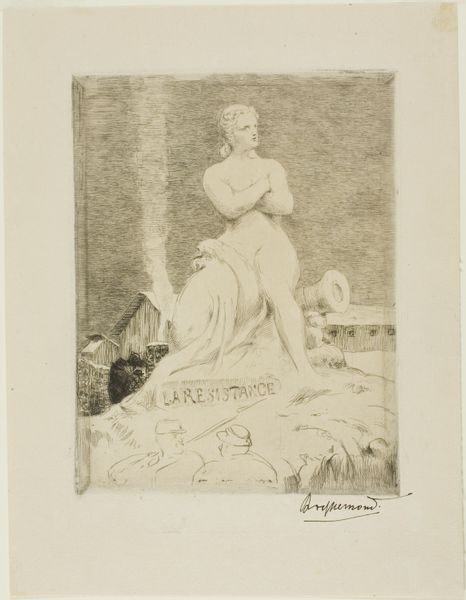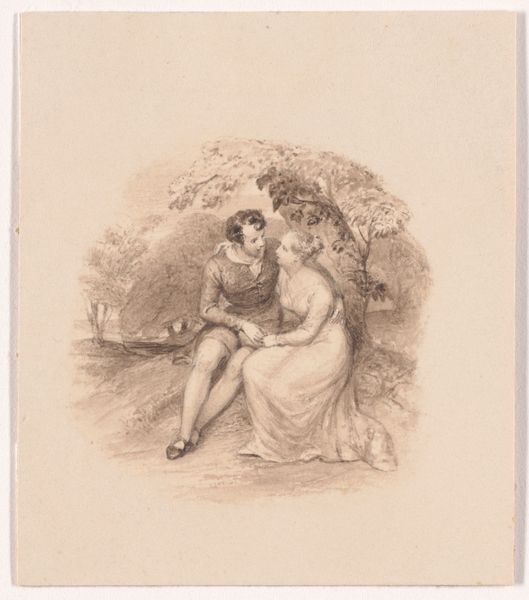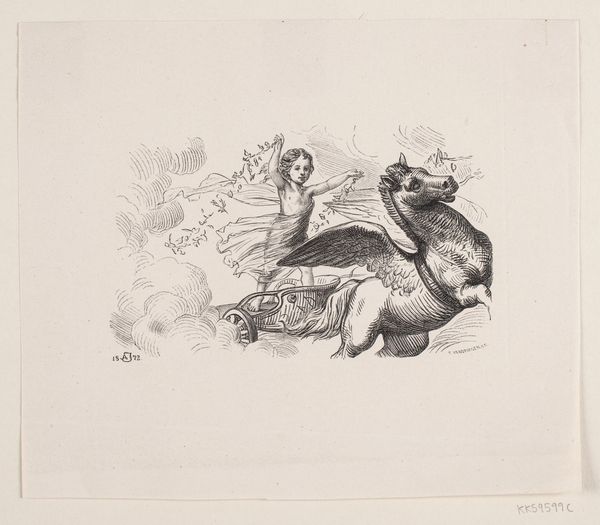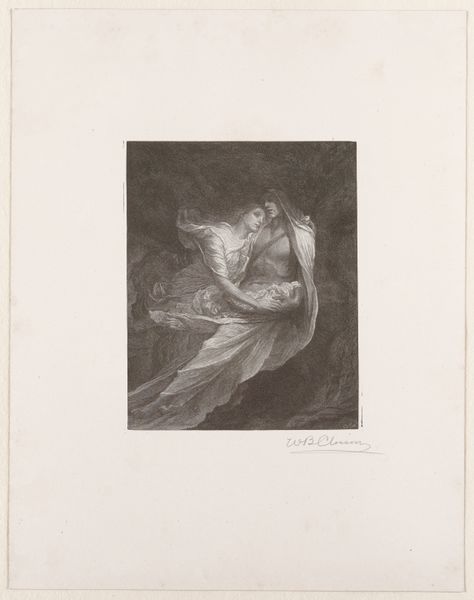
A Woman Sitting by the Window (“Evening Thou Bringest All”), from the first issue of Specimens of Polyautography Possibly 1802 - 1803
0:00
0:00
drawing, lithograph, print, paper, ink
#
portrait
#
drawing
#
toned paper
#
lithograph
# print
#
paper
#
ink
#
romanticism
Dimensions: 232 × 318 mm (image/primary support); 372 × 490 mm (secondary support)
Copyright: Public Domain
Editor: Here we have Henry Fuseli's lithograph from around 1802-1803, "A Woman Sitting by the Window ('Evening Thou Bringest All')". The stark ink on paper creates a rather intimate and somewhat melancholic feel. What strikes you most about this print? Curator: As a materialist, what jumps out is the lithographic process itself. This was an early experiment in making art accessible through mass production. Consider the social context: how did the relatively new availability of printed images shape art consumption and artistic labor in the early 19th century? Editor: That’s a great point, I hadn’t considered the broader implications of the printmaking technique itself. Did lithography influence Fuseli's artistic choices here? Curator: Absolutely. Look at the graphic quality, the sharp contrasts. The lithographic crayon allowed for a certain immediacy, a freedom of line, but also imposed constraints. How did the material possibilities – and limitations – of lithography contribute to the mood you described? Editor: I see. The starkness of the medium really amplifies the sense of isolation in the figure. It makes you consider not just *what* is depicted but *how* the very act of making contributes to its meaning. Curator: Exactly. It challenges the hierarchy between artistic skill and mechanical reproduction, forcing us to think about value, authorship, and audience. It's a work born from material innovation, reshaping artistic production and dissemination. Editor: So much more than just a melancholic portrait; it’s a reflection of changing technologies and their impact on art. Curator: Precisely. Understanding the materials and modes of production unlocks a deeper understanding of the work and its time.
Comments
No comments
Be the first to comment and join the conversation on the ultimate creative platform.
